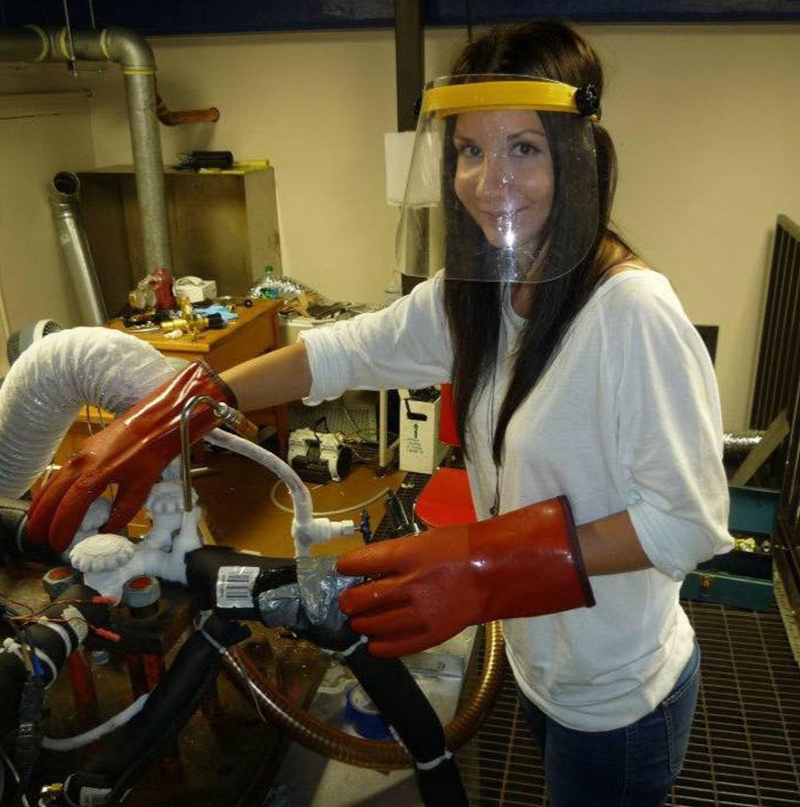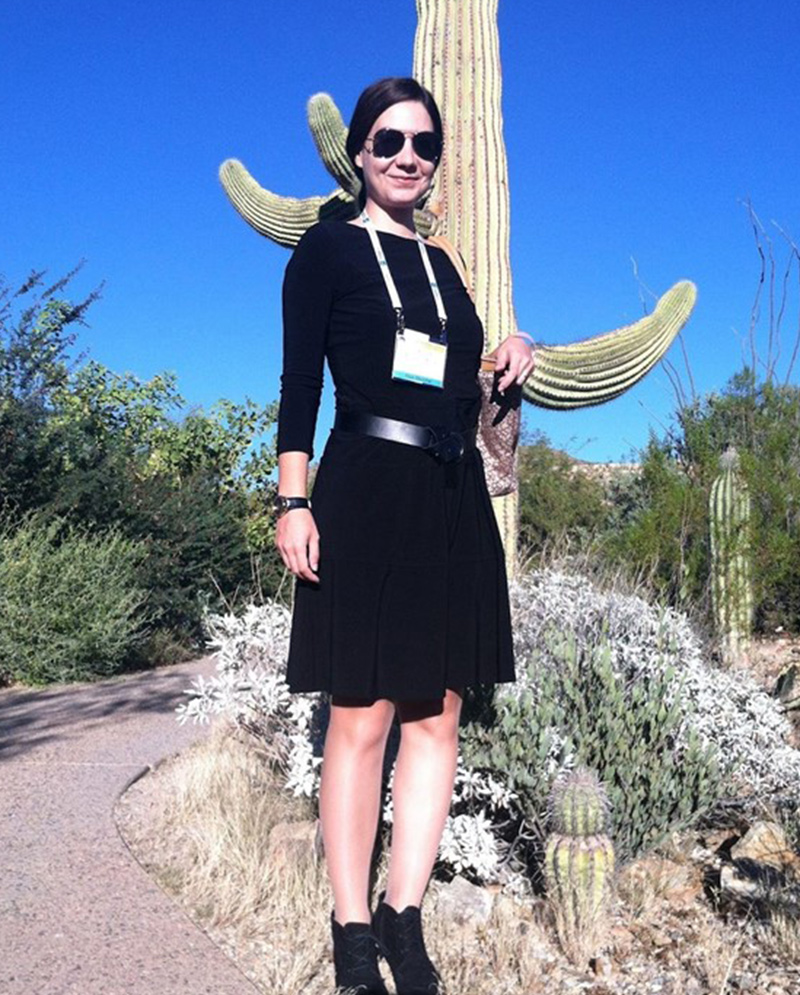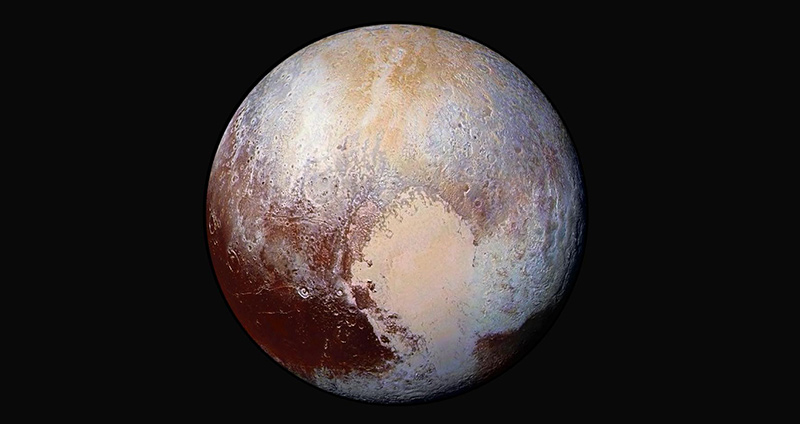
Dr. Adrienn Luspay-Kuti
Principal Investigator, Europa Clipper PIMS Instrument
University of Arkansas
Ph.D. in Space and Planetary Sciences
Eötvös Loránd University, Budapest, Hungary
M.S. in Astronomy
From death metal to liquefied gases, Adrienn Luspay-Kuti's passions have carried her from the concert halls of her native Budapest to the far-flung environments of Titan and Comet 67P.
“Fascinated by space” since she was a preschooler, a lack of math and physics classes at her school almost sent her in another direction. But in the tradition of other intrepid women of science, such as Cecilia Payne and Katherine Johnson, she pushed past obstacles and made her own path. Adrienn is now the principal investigator for the Plasma Instrument for Magnetic Sounding (PIMS) instrument on NASA's Europa Clipper mission, and she's a planetary scientist at Johns Hopkins University’s Applied Physics Laboratory.
I've been fascinated by space since I was about 4 years old. My parents talked to me about the planets and some of the major moons and their main characteristics, and I just thought it was the coolest thing ever. I wanted to be an astronaut, and I clearly remember thinking, "How horrible that my great-grandparents died without EVER being to space."
I was in kindergarten when I decided that I wanted to be an astronomer. I had a deep fascination with space and the planets, largely from what my father told me. Every time I answered the question: "What do you want to be when you grow up?" I remember adults just smiling politely, probably thinking, "Oh, how cute." That skepticism must have rubbed off on me over the years, as astronomy and space science weren't generally viewed as ways to make a living. In fact, until much later, I hadn't known any scientists, let alone women in science, in my home country of Hungary. This subconsciously reinforced the thought that my working in the space program one day was more of a dream, and that I probably needed to think more realistically when it came to picking a career.
My high school was more focused on humanities than math and physics, and I was always told I had a talent for languages, so it seemed natural to do something with that. But when the day came, I decided to not submit my then-completed college application, thinking that if I will be going to school for several more years, it had better be something I truly want and enjoy.
After a gap year, I applied to the astronomy program at one of the most prestigious universities in Hungary. I was accepted and, despite the difficulties stemming from my lack of intense training in math and physics compared to some of the others there, I pushed through and flourished.
"Be open to working on topics outside your primary focus. Being flexible helps you figure out what it is you enjoy doing."

Adrienn Luspay-Kuti
Principal Investigator, Europa Clipper PIMS Instrument
About three years in I decided to specialize in planetary science, which at the time not too many people were doing in Hungary. I received my master’s in astronomy, and I decided to pursue a Ph.D. in the U.S. – the epicenter of space exploration. I was focused on having a career in planetary and space sciences and I wanted to work on missions. I seized the opportunities that I was fortunate enough to get, even if they were out of my comfort zone. These opportunities allowed me to prove myself, which ultimately landed me where I am today.
I am the principal investigator for the Plasma Instrument for Magnetic Sounding (PIMS) instrument on NASA's Europa Clipper mission.
The principal investigator leads the PIMS instrument team. I’m responsible for making sure the instrument works as intended, and for leading the team to make sure everybody does their jobs and their roles as intended.
I'm very hands-on. To me, it's really important to understand everything that's happening to the instrument, and how its integrated into the spacecraft. For instance, I traveled to JPL in March 2024 to support the spacecraft’s the thermal vacuum testing (TVAC) – just to make sure that the instrument responded as we expected it to.
I love the Europa Clipper team. It is basically a dream come true to work on a mission like this. The best thing about the mission is the people I get to meet and work with. It’s like being a part of this big family. We are bound together by something that's bigger than any one person.
I am also a planetary scientist at the Applied Physics Laboratory at Johns Hopkins University (APL) where I study planetary bodies in the outer solar system.
I also studied the storage and release of volatiles (molecular compounds including water, carbon dioxide, and methane inside comets) using data from the ROSINA mass spectrometer that was onboard ESA’s Rosetta spacecraft, looking for patterns in the outgassing that can give us clues about the formation of the comet.
In addition, I work on the photochemical modeling of cold nitrogen-methane atmospheres (Titan, Pluto, Triton), studying the composition and structure of these atmospheres.
My research interests are very broad, with several very different projects that I work on, but I do like branching out and getting involved in new things.
Be proactive in seeking out opportunities, and be open to working on topics outside your primary focus. I think being flexible is very beneficial in this field because it helps you figure out what it is you enjoy. Working on more than one topic will also help expand your network, which can be helpful for being involved in publications and is good for your career in general.
Trailblazing women like Cecilia Payne, Vera Rubin, and Katherine Johnson, among others, are an inspiration to me because not only were they brilliant in their fields, but because they made a difference for future generations. They had to battle with the challenges of being women in a male-dominated field, on top of their research. Doing science is hard to begin with, so dealing with all the harmful beliefs coming their way from others, blocking them along the way, was just too much. They weren't given the credit, respect, or appreciation they deserved. Despite these difficulties they persisted, which takes enormous strength and dedication.
I have the utmost respect and admiration for them. Eugenie Clark is another such inspiration. Stephen Juhász, a Hungarian-American like myself, also inspires me. He was an engineer born in 1913 in Budapest, who immigrated to the United States in the ‘50s and worked at the Southwest Research Institute in San Antonio, Texas, where I also worked in the past. After he died a little short of making it to 100, the library contacted me and asked if I wanted to have his personal book collection and other miscellaneous things. Even though I never got to meet him and hadn't known much about him before his death, I feel a connection to him through his books and our common roots. I have a map of Budapest, my home city, from the 1800s that was his, framed and displayed in my house.
Finally, my two young kids also inspire me to be creative and learn how to be a good leader. Watching them develop is the most amazing and humbling thing. They inspire me to model compassion, reason, and logic, which they can use as guiding principles as their personalities develop, and to teach them to be critical thinkers.
First and foremost, Europa Clipper, which I simply cannot wait to see in action. It's still hard to believe that I get to work on a NASA mission that will be going to Europa! I wish I could tell my 5-year-old self that one day we'll be involved in one of the most awesome NASA missions. She'd probably be flabbergasted.
I also really enjoyed being a co-investigator on the Trident Discovery concept study, which made it to the finish line, but ultimately wasn't selected. I particularly enjoyed working with our ionosphere sub-team. We complemented each other both scientifically and personally, and we worked together well. It would've been so nice to continue working with them on Trident under the leadership of our principal investigator, Louise Prockter, for decades to come. While Trident won't be going to Neptune’s moon Triton in the near future, I hope we will make it back in my lifetime.
My other favorite project is related to comets. I was a science team member of the ROSINA mass spectrometer onboard the Rosetta mission, which was the first-ever spacecraft to orbit a comet, and to follow it along for a good chunk of its orbit. Observing a comet with the spatial and temporal resolution that Rosetta provided is invaluable for picking up on some of the nuances of outgassing that provides our best window to understanding these leftover bodies. While I had lots of difficulties along the way working on this project, being able to work on Rosetta gave me great opportunities and helped me grow as a scientist.

I love metal. I mean the genre of music, not necessarily the elements – though metals are pretty cool, too! Think the heaviest of heavy – from Pantera and Slayer to Cannibal Corpse. I also love post-metal, post-rock, and ‘90s grunge. In my free time, I play with my kids, listen to true-crime podcasts, and enjoy fashion and interior design. I like planning spaces and rooms, but it takes me a long time until it all comes together in my mind. Free time is something I don't have a ton of, so we still have spaces in our house that I haven't spent much thought on.
One of my favorites is this image of Pluto. We had no idea what Pluto looked like for so long, and I don't think many imagined it to be this amazing. I love how these outer solar system bodies are always full of surprises that we have no idea about until we go there and look. Not only is Pluto an active world, but it may also be an ocean world. There's just something eerie (in a good way) about seeing a planetary body so far away from us with so much detail, just out in the cold doing its thing. Now, Pluto's heart can be taught in schools as a distinct characteristic of Pluto, similar to how we think of the rings around Saturn.

